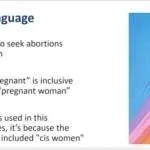(New York Post) The college admissions rat race has reached new levels of insanity, according to one consultant who has seen the havoc it wreaks on families firsthand.
“It’s beyond crazy,” Christopher Rim, founder and CEO of Command Education, told The Post. “The emphasis on elite and Ivy schools has absolutely gone off the rails.”
Among the wild lengths he’s seen parents go to in pursuit of an acceptance letter: spending up to $1.5 million on college counselors and moving across the country for a more advantageous address.
“Many Ivy League admissions officers are actively recruiting in non-urban areas where there are no students currently applying — which means that talented students in those areas who do apply generally have better chances of admission,” Rim said.
“I’ve seen families drop out of [prep schools] Collegiate and Dalton and move to states like Kentucky and Arkansas for high school — it’s a sacrifice families are willing to take to increase their child’s chances of acceptance at their dream colleges.”
 Harvard University’s admissions rate has dropped to an ultra-competitive 3.41%, driving some parents to take extreme measures to get their kids in.Getty Images
Harvard University’s admissions rate has dropped to an ultra-competitive 3.41%, driving some parents to take extreme measures to get their kids in.Getty Images
Even though Command Education won’t work with anyone younger than 7th grade, Rim said he regularly has to turn down families who want him to start consulting with their 2nd or 3rd graders.
He even had one family lie about their child’s age in an attempt to enroll their 5th grader in his program.
“It’s a hot mess,” Rim said. “Families are as frantic and crazy as you hear they are. If their child makes one minor mistake, they think that it’s the end of the world and everything they’ve worked towards has been for nothing.”
 College consultant Christopher Rim says that the college admissions process has pushed some families to move cross-country to game the system.Command Education
College consultant Christopher Rim says that the college admissions process has pushed some families to move cross-country to game the system.Command Education
Some are even willing to shell out unthinkable sums of money to get a leg up — like the mom who Manhattan-based consultant Ivy Coach said agreed to pay $1.5 million to help get her daughter into an elite university.
Sometimes, Rim said, kids who don’t get into an Ivy League school will take a gap year and re-apply rather than go somewhere “less prestigious.”
The 28-year-old’s college consultancy firm pairs, at any given time, around 200 students with college counselors who meet with them weekly and text with them daily.
The majority of Rim’s employees are between 23 and 30, meaning they are able to forge “more of an older sibling mentorship.”
 Rim, who founded Command Education out of his Yale (above) dorm room in 2015, admits he “wasn’t the best student” in high school but stood out because of his extracurriculars.Shutterstock
Rim, who founded Command Education out of his Yale (above) dorm room in 2015, admits he “wasn’t the best student” in high school but stood out because of his extracurriculars.Shutterstock
He founded Command Education in 2015 out of his Yale dorm room — after his classmates were flabbergasted that Rim, who admitted he “wasn’t the best student,” got into the Ivy League school while his high-school class’ valedictorian didn’t.
His secret sauce, Rim said, was an organization he founded to help teach elementary students around his home state of New Jersey about emotional intelligence and bullying prevention.
“I was passionate about this work. I helped students,” he said. “And it was my genuine extracurricular passion that made me stand out.”
Since Rim went through the admissions process himself a decade ago, the competition has intensified significantly.
 At elite schools like NYU — where so many more students are applying that the admissions rate dropped from 27% to 8% in two years — more foreign students are fighting for spots.Helayne Seidman
At elite schools like NYU — where so many more students are applying that the admissions rate dropped from 27% to 8% in two years — more foreign students are fighting for spots.Helayne Seidman
At NYU, for example, the admissions rate dropped to a mere 8% for the class of 2027, tumbling from 27% for the class of 2021.
And Harvard’s already tight admissions rate of 7.47% from a decade ago has been slashed in half to a nearly impossible 3.41% today.
It’s not that the class sizes are getting smaller; instead, there are more top-tier students in competition — and now the whole world is fighting for the same few slots at elite American schools.
Rim estimates about a third of his clients are international, and that number is growing each year, especially in the Middle East.
 High-schoolers aspiring to top colleges often spend three hours a day on homework, are leaders of multiple clubs, play two or three sports, study several hours a week with an SAT tutor, and squeeze in weekly admissions counseling sessions.Shutterstock
High-schoolers aspiring to top colleges often spend three hours a day on homework, are leaders of multiple clubs, play two or three sports, study several hours a week with an SAT tutor, and squeeze in weekly admissions counseling sessions.Shutterstock
“Everyone’s shocked by that. People guess the most popular countries are China or Korea or Japan,” he said. “But, in countries like Saudi Arabia and Qatar, if you get into a top school, the government pays for your entire college education.”
The pressure this competition puts on kids is next level.
On top of a full school schedule, high-schoolers aspiring to top schools — including Stanford, the University of Chicago, and MIT — often spend three hours on homework daily, are leaders of multiple clubs, play two or three sports, study several hours a week with an SAT tutor, and manage to squeeze in a weekly admissions counseling appointment, too.
“They just have to be number one,” Rim said. “There’s a consistent, constant pressure. You can’t just join a club or sport and just enjoy it. You have to be the best at it.”







